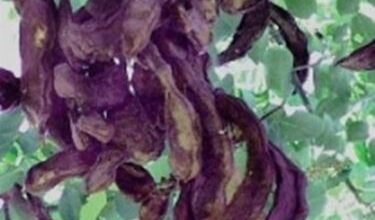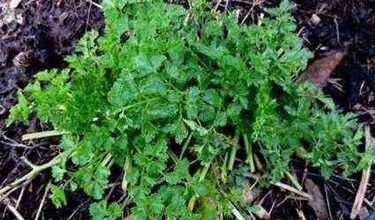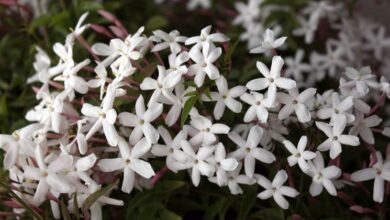Bougainvillea
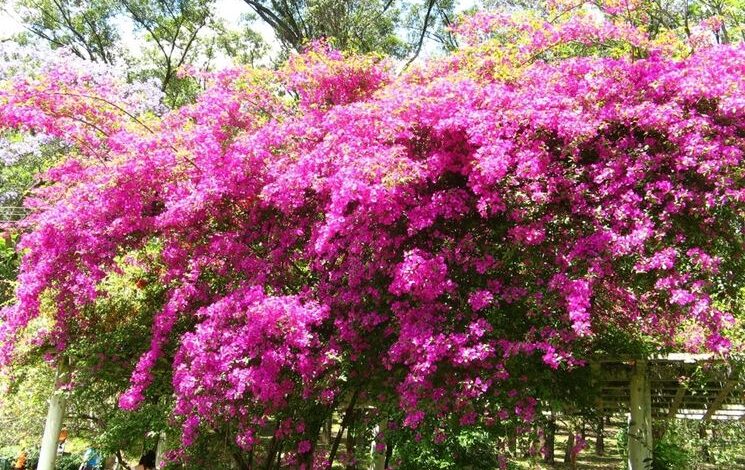
Bougainvillea
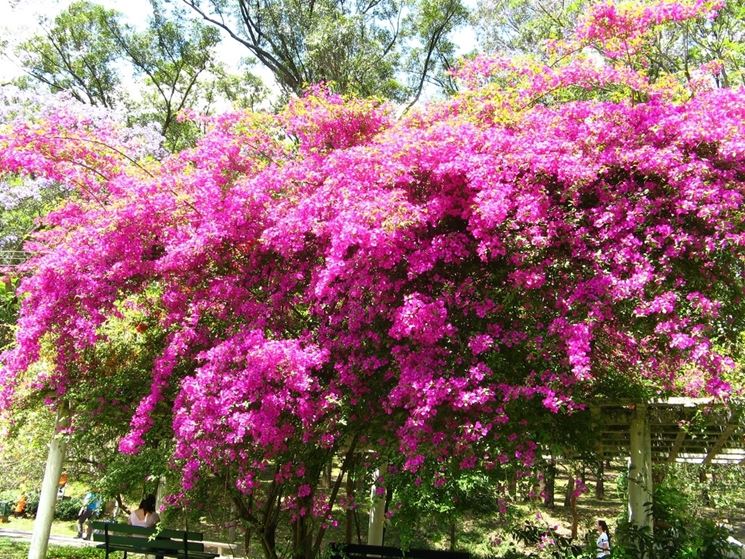
Features
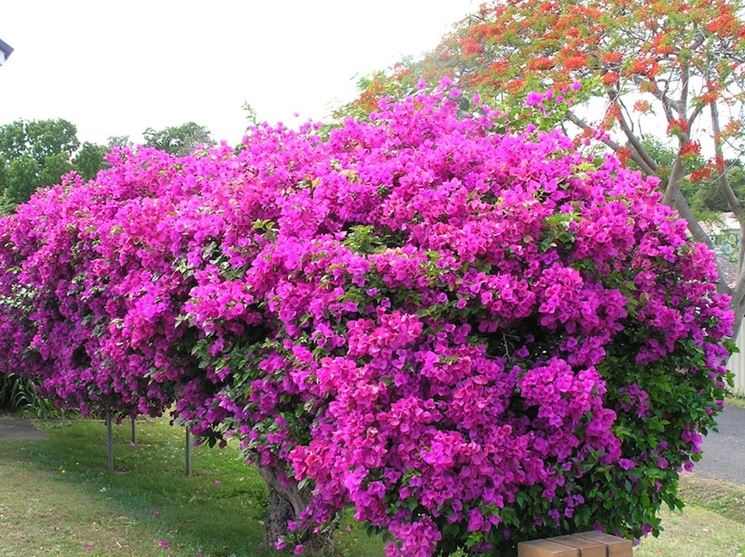
Bougainvillea is a climbing species native to South America. Its name is due to the French admiral De Bougainville who discovered it and introduced it to Europe. The plant belongs to the Nictaginaceae family and can have a climbing, shrubby and bushy behavior. Shrub varieties are small trees that lend themselves to growing in pots to decorate terraces and balconies and the exteriors of houses overlooking the garden. The climbing and bushy varieties, on the other hand, in addition to a considerable ornamental value, can also have a useful shielding and privacy protection function, especially if they are placed on pergolas and fences. The effect of the plant on the walls is also remarkable, where, in addition to the aesthetic result, you can also have the advantage of saving on the old spans of the walls, faded or faded. Some varieties of bougainvillea can even reach eight meters. The general characteristics of this plant are the oval leaves with thorny edges, small yellow flowers and bracts that are mistakenly mistaken for flower petals, while in reality they are mutations of the stem and appear just like petals or panicles of various colors, with shades ranging from pink, to lilac, to red, to white.
Variety
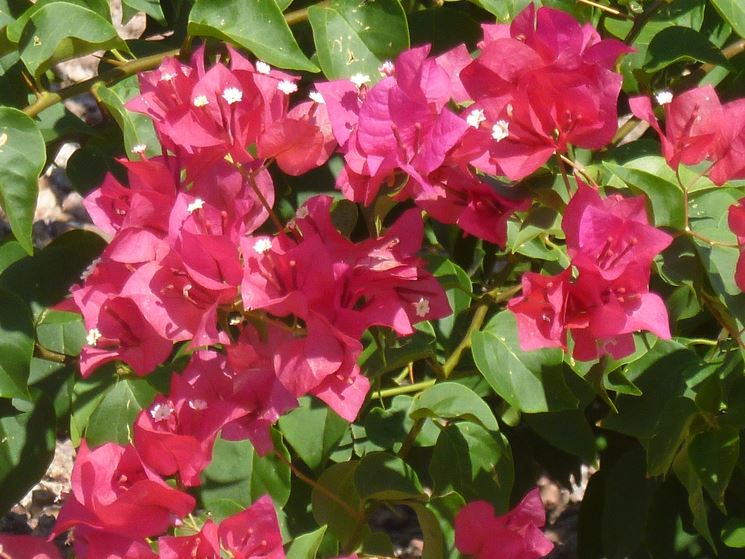
Although there are eighteen varieties of bougainvillea, only a few are used for ornamental purposes. Among these we also find hybrids made famous by their beauty and ease of cultivation. Among the boungavilleas present in nature, we remember the Bougainvillea glabra, the Bougainvillea spectabilis, the Bougainvillea speciosa and the Bougainvillea refulgens, all native to Brazil. Among the hybrids, the Bougainvillea x buttiana and the hybrid born from the cross between bougainvillea glabra and spectabilis stand out for their fame. The hairless variety is the most suitable for growing in pots. It blooms from summer to autumn and has sub-varieties with bracts ranging from pink to violet. In some varieties the leaves are larger, may be heart-shaped and may be streaked with white. Bougainvillea spectabilis is a vigorous climber with intense green leaves and thorny edges. This variety always blooms between summer and autumn and has magenta-pink bracts, a deeper pink than normal, almost phosphorescent. The bougainvillea speciosa is characterized by heart-shaped bracts, with a pink or lilac color, while the refulgens one has bracts between purple and purple. Bougainvillea x buttiana is a hybrid obtained from the cross between the Peruvian bougainvillea and the glabrous bougainvillea. It has bracts ranging from red to orange. The bracts of the hybrid born from the crossing between bougainvillea glabra and spectabilis are also orange. In our variety list we cannot forget the Peruvian bougainvillea and the white bougainvillea. The first variety has large bracts with more muted colors, which can be identified with orange-pink. This variety is used to create new hybrids. Therewhite bouganville takes its name from the bracts, which are pure white in color, with small, always white flowers inside.
Temperature and exposure
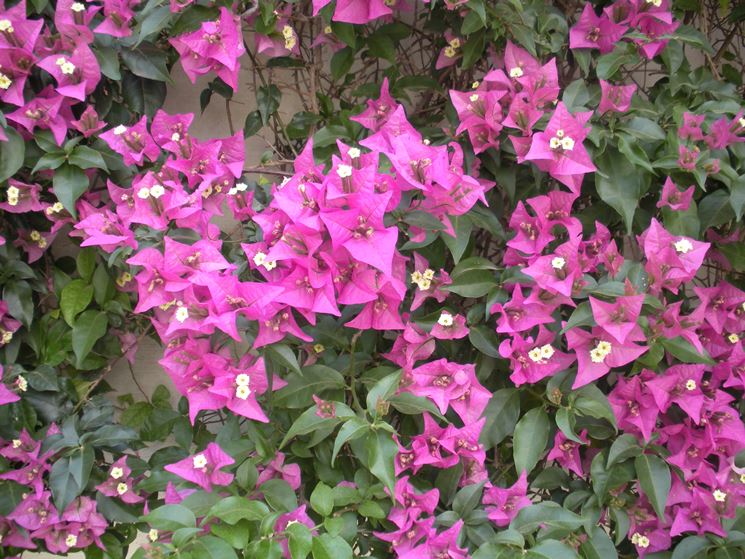
Bougainvillea is a plant native to countries with a tropical climate, so it easily adapts to the temperatures of Mediterranean countries. To make it grow healthy, care must be taken not to subject it to temperatures that are too low or below seven degrees. The species grown in pots, during the winter months, should be, in fact, placed away from the cold. Generally this plant tolerates heat and drought well and even some winter frosts, presenting itself as a species that does not require excessive care or maintenance. The bougainvillea is, however, a plant of hot climates and to expand in a luxuriant way, it needs full exposure to the sun. The sun’s rays must reach the plant for at least four hours a day.

